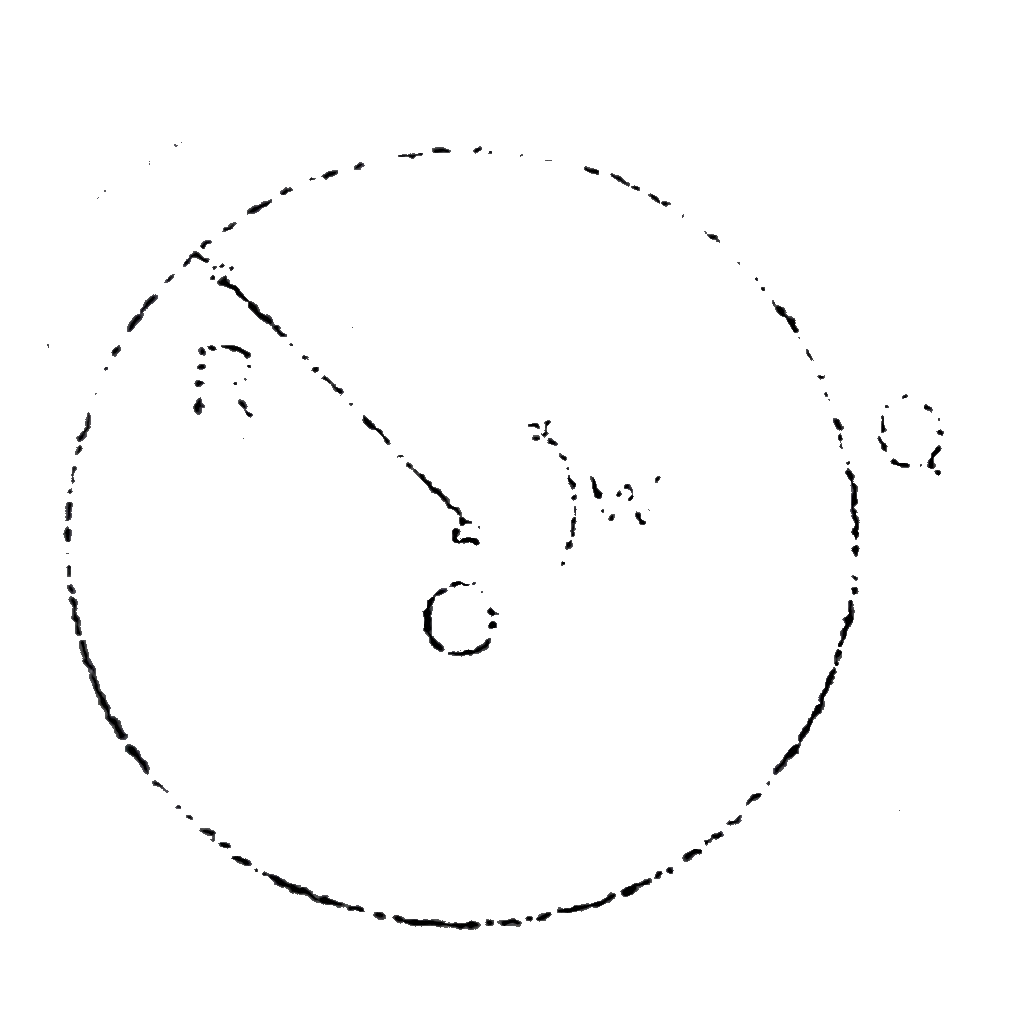Solid uniform conductiong sphere of mass 'm' and charge Q, rotates about its axis of symmetry with constant angular velocity 'ω' then the ratio of magnetic moment to the moment of inertia of the sphere is xQω6m then x is :(Neglect induced charges due to centrifugal force)
To solve the problem, we need to find the ratio of the magnetic moment (μ) to the moment of inertia (I) of a solid uniform conducting sphere rotating about its axis of symmetry.
1. Understanding the Moment of Inertia (I):
The moment of inertia of a solid sphere about its axis of symmetry is given by the formula:
I=25mR2
where m is the mass of the sphere and R is its radius.
2. Calculating the Magnetic Moment (μ):
The magnetic moment of a rotating charged object can be calculated using the formula:
μ=I⋅A
where I is the current and A is the area.
- Finding the Current (I):
The total charge Q rotates around the sphere. The time period T for one complete revolution is:
T=2πω
The current I can be defined as the charge passing through a point per unit time:
I=QT=Qω2π
- Calculating the Area (A):
The area for a circular path of radius R is:
A=πR2
- Substituting into the Magnetic Moment Formula:
Now substituting the values of I and A into the magnetic moment formula:
μ=(Qω2π)⋅(πR2)=QωR22
3. Finding the Ratio of Magnetic Moment to Moment of Inertia:
Now, we need to find the ratio μI:
μI=QωR2225mR2
Here, R2 cancels out:
μI=Qω2⋅52m=5Qω4m
4. Equating to the Given Ratio:
According to the problem, this ratio is given as:
xQω6m
Setting the two expressions equal gives:
5Qω4m=xQω6m
5. Solving for x:
Canceling Qω and m from both sides (assuming they are non-zero):
54=x6
Cross-multiplying gives:
5⋅6=4x⟹30=4x⟹x=304=7.5
Final Result:
Thus, the value of x is:
7.5
The moment of inertia of a solid sphere about its axis of symmetry is given by the formula:
I=25mR2
where m is the mass of the sphere and R is its radius.
The magnetic moment of a rotating charged object can be calculated using the formula:
μ=I⋅A
where I is the current and A is the area.
The total charge Q rotates around the sphere. The time period T for one complete revolution is:
T=2πω
The current I can be defined as the charge passing through a point per unit time:
I=QT=Qω2π
The area for a circular path of radius R is:
A=πR2
Now substituting the values of I and A into the magnetic moment formula:
μ=(Qω2π)⋅(πR2)=QωR22
Now, we need to find the ratio μI:
μI=QωR2225mR2
Here, R2 cancels out:
μI=Qω2⋅52m=5Qω4m
According to the problem, this ratio is given as:
xQω6m
Setting the two expressions equal gives:
5Qω4m=xQω6m
Canceling Qω and m from both sides (assuming they are non-zero):
54=x6
Cross-multiplying gives:
5⋅6=4x⟹30=4x⟹x=304=7.5
Thus, the value of x is:
7.5
Topper's Solved these Questions
Similar Questions
A thin uniform ring of radius R carrying charge q and mass m rotates about its axis with angular velocity ω. Find the ratio of its magnetic moment and angular momentum.
View SolutionA ring of mass m and radius R is given a charge q. It is then rotated about its axis with angular velocity ω.Find
(iii)Magnetic moment of ring.
View SolutionA solid sphere of radius r and mass m rotates about an axis passing through its centre with angular velocity ω. Its K.E. Is
View SolutionA ring of mass m and radius R is given a charge q. It is then rotated about its axis with angular velocity ω.Find
(ii) Magnetic field produced at the centre of ring.
View SolutionA thin disc of radius R has charge Q distributed uniformly on its surface. The disc is rotated about one of its diametric axis with angular velocity ω. The magnetic moment of the arrangement is
View SolutionA non-conducting disc having unifrom positive charge Q, is rotating about its axis with unifrom angular velocity ω.The magnetic field at the centre of the disc is.

View SolutionA uniformly charged disc of radius r and having charge q rotates with constant angular velocity ω. The magnetic dipole moment of this disc is 1nqωr2. Find the value of n.
View SolutionA sphere of mass 10 kg and radius 0.5 m rotates about a tangent. The moment of inertia of the sphere is
View SolutionA disc of mass m has a charge Q distributed on its surface. It is rotating about an XX' with a angular velocity ω. The force acting on the disc is

View SolutionA ring of mass m and radius R is given a charge q. It is then rotated about its axis with angular velocity ω.Find
(i)Current produced due to motion of ring
View Solution
